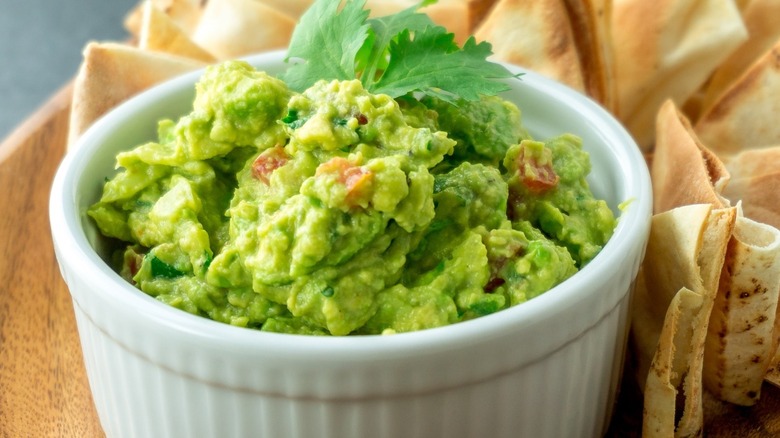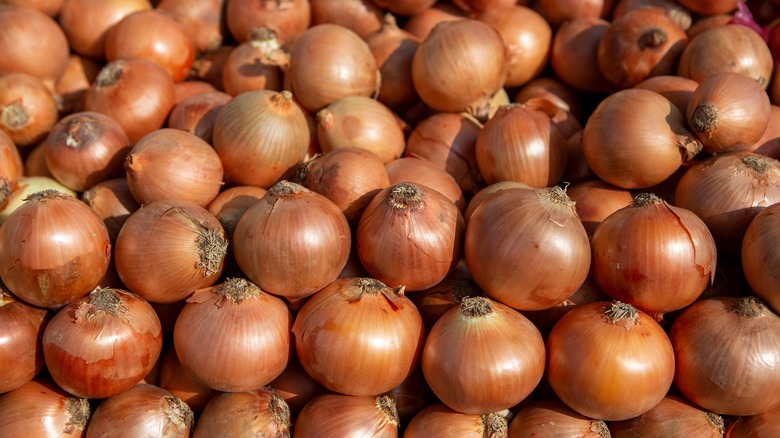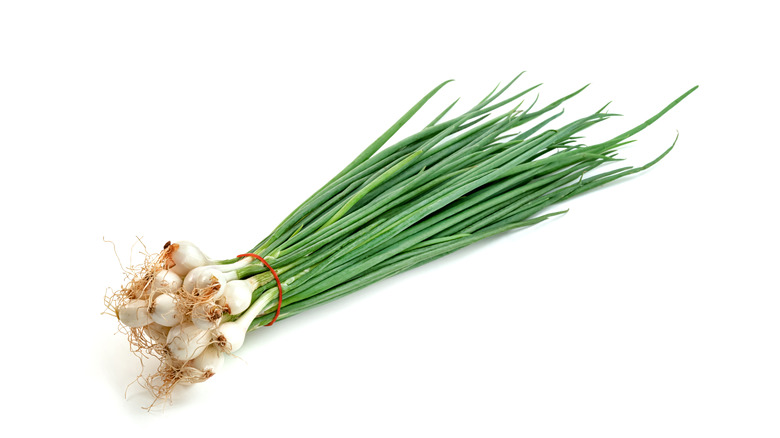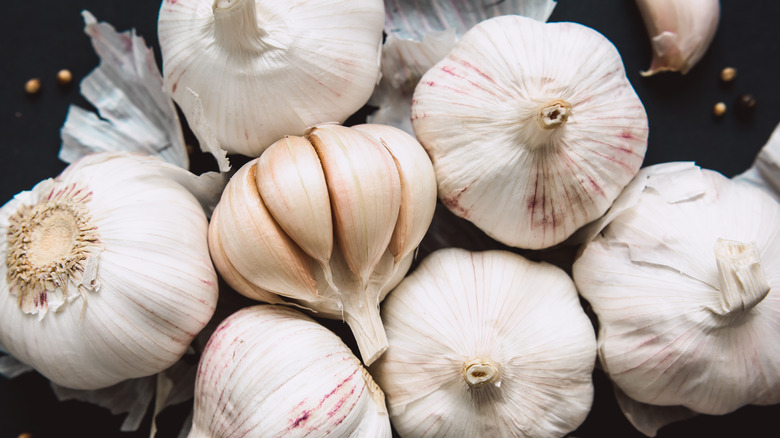What You Should Know Before Adding Onion To Guacamole
Who doesn't love a rich and creamy dip made with a mixture of simple, healthy ingredients? Get your carrot sticks and tortilla chips ready, because the U.S. has ended its Mexican avocado ban – and just in time for Cinco de Mayo! If you're looking for a delicious guac to go with your chips, this no-cook dip is the perfect and irresistible solution that's meant to be shared between friends and family.
According to HuffPost, this "authentic Mexican dish is no longer relegated to Mexican restaurants and fast food taco places." The smashed green goodness is said to have been created by the Aztecs as far back as the 16th century. It can be found in supermarkets across the country, but the store-bought version is never quite as good as the guac you can make at home.
Although guacamole is made just with a few ingredients such as avocados, hot peppers, onions, and salt, the simplicity of this dip can be a bit misleading as guac is easy to make but hard to master. Surprisingly, there are many mistakes people make when attempting a guacamole recipe.
Different onions yield different results
RealSimple reports some secrets that are key to making a delicious and crowd-pleasing guac. To begin, you'll need only the best, ripe avocados. If you're going the authentic route, the ingredients will need to be mashed with a traditional Mexican mortar called a molcajete. The time and power spent muddling your avocado depend solely on your personal texture preferences of a smooth or chunky dip. And even though it's not one of the authentic ingredients, a squeeze of lime juice will bring a zesty flavor to your bowl of guac and extend its shelf life, so why not shake things up a bit?
The right onions, however, can make a massive impact on the final result of your guacamole recipe. Traditionally, white onions are the most common option, giving sweetness and freshness to the dip. Still, you can opt for red onions, which have a bolder, spicier flavor. Yellow onions, on the other hand, should be "rinsed under hot water to get rid of any bite before adding it to the recipe" (via HuffPost). And once you've mastered the quick and easy guacamole recipe, it's not a bad idea to pair the dip with a margarita on the side.
Scallions, shallots, and sweet onions
Apart from white, red, and yellow onions, there are other types of onions that you can add to your guacamole, and each one brings a different flavor or texture to the popular dip. Scallions are native to China but are able to be easily cultivated in a variety of regions. Their stalks can grow up to a foot tall. Although they are often used as a garnish for other dishes and prized for their crunch, scallions can also be grilled, finely chopped, and then mashed with other ingredients in order to make a bowl of guac (via Food & Wine).
You might be wondering what's the difference between shallots and onions? Shallots are used in the same way as onions or scallions; finely minced, or mashed with the other ingredients, roasted or raw. However, shallots add an intense flavor to guacamole, so if you've never used them in the recipe before, try starting with a small amount.
If you're hesitant or still undecided, your best bet might be the addition of mild-flavored sweet onions such as Vidalia, Walla Walla, or Maui. All three types are similar in flavor, and these varieties hold a lot of water so the strong flavors become "watered down," ensuring the guacamole will have a mild, but distinct taste (per Ask the Food Geek).
Similar ingredients yield different results
But who says guacamole is always made with onions? Even though garlic is not a part of traditional guacamole, some people like to use it instead of onions. A bulb of garlic is much smaller than an onion, but it packs a powerful flavor. And while onions are typically used raw when making guacamole, garlic is most commonly cooked before consumption, and this is especially important when using it in the creamy dip. It's best to cook garlic first because "high temperatures reduce its sharpness and increase its sweetness" (via SoftSchools.com). Apart from being an excellent substitute for onions in guacamole, the Cleveland Clinic reports that garlic has numerous health benefits, including antifungal and antibacterial properties, which is a good reason to add it to your next batch of guac.
With such a wide array of options, some might be overwhelmed and opt to skip the onions and garlic altogether. Most recipes for guacamole with no onions are made with a simple combination of avocados, lime juice, jalapenos, and salt. The guacamole won't have the same oniony bite and sweetness, but jalapenos will give it a spicy kick that the dip deserves.
If you're feeling frisky, in addition to shallots and garlic, there is a secret ingredient you can add to your guacamole recipe.



